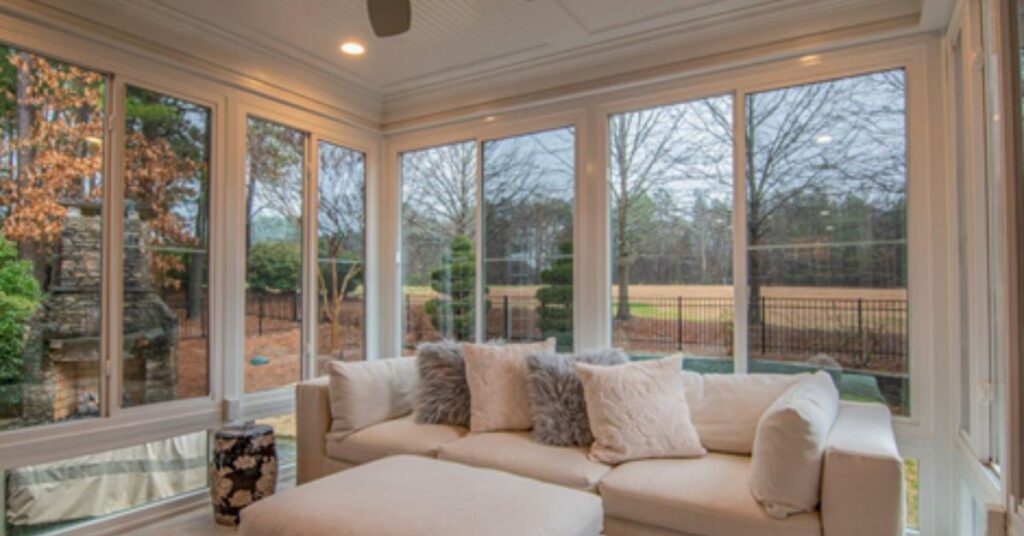Have you ever felt like your home doesn’t quite match your needs? Maybe it’s cluttered, outdated, or just doesn’t feel as cozy as you’d like. Making some room for comfort – pun intended – doesn’t have to be overwhelming. With the right updates and adjustments, you can transform your home into a place that feels inviting and works perfectly for your lifestyle.
Comfort isn’t just about plush furniture or soft blankets. It’s about designing a space that reflects your personality and meets your daily needs. From furniture placement to lighting and functional upgrades, small changes can make a big difference in how your home feels.
In this blog, we will share practical tips and ideas to help you revamp your home for maximum comfort and functionality.
Declutter and Organize
The first step to creating a more comfortable space is getting rid of clutter. A cluttered home feels chaotic and makes it harder to relax. Go through each room and identify items you no longer need or use. Donate, recycle, or store these items to free up space.
Once you’ve decluttered, focus on organizing what’s left. Use storage solutions like bins, shelves, or drawer dividers to keep everything tidy. Labeling can also help you quickly find what you need. When your home is organized, it feels more spacious and inviting.
Update Key Areas
Revamping your space doesn’t always mean redoing the entire house. Sometimes, focusing on a few key areas makes the biggest impact. The bathroom, for example, is a place where comfort and functionality are essential.
If your space feels outdated or doesn’t meet your needs, consider working with a reliable bathroom remodeling company. Experts can help you with redesigning to include modern fixtures, better storage, and improved layouts. Upgrades like a rainfall shower, heated floors, or stylish tiles can turn your bathroom into a relaxing retreat.
Choose Comfortable Furniture
Furniture plays a big role in how your space feels. Look for pieces that are not only stylish but also comfortable and functional. Sofas with soft cushions, chairs with ergonomic support, and beds with quality mattresses can make a huge difference.
Think about how you use each room and choose furniture that fits those needs. For example, if you enjoy hosting guests, a sectional sofa might be a great addition to your living room. For a cozy reading nook, a plush armchair with a footrest could be perfect.
Focus on Lighting
Lighting can completely change the mood of a room. Harsh lighting can make a space feel cold, while soft, warm lighting creates a cozy atmosphere. Use a mix of lighting types, such as overhead lights, floor lamps, and table lamps, to provide flexibility.
Consider adding dimmers to control brightness or using LED bulbs for energy efficiency. Natural light is also important, so keep windows unobstructed and use light curtains or blinds to let sunlight in during the day.
Add Personal Touches
Personal touches make a house feel like a home. Display items that reflect your personality and style, such as family photos, artwork, or travel souvenirs. Incorporate colors and patterns that you love through pillows, rugs, or curtains.
Plants are another great way to add life and personality to your space. They improve air quality and create a calming environment. Whether it’s a large indoor tree or small potted succulents, plants bring warmth and comfort to any room.
Create Functional Layouts
A functional layout makes your home more enjoyable to live in. Rearrange furniture to create a natural flow and make the most of your square footage. Avoid overcrowding rooms with too much furniture, as it can make areas feel cramped.
In multi-purpose rooms, such as a living room that doubles as a home office, use furniture and decor to define separate zones. Rugs, shelving, or room dividers can help create boundaries while keeping everything cohesive.
Invest in Quality Materials
When revamping your home, focus on quality materials that last. Durable flooring, sturdy furniture, and high-quality fabrics are worth the investment. They not only look better but also feel more comfortable over time.
For example, hardwood floors add warmth and elegance to a room, while soft area rugs make the space feel cozy. In the kitchen, countertops made of materials like quartz or granite combine style and durability.
Improve Air Quality
Comfort isn’t just about appearance—it’s also about how your home feels. Good air quality makes a big difference in your overall well-being. Regularly clean air vents, vacuum carpets, and use an air purifier to reduce allergens and pollutants.
Adding plants can also improve air quality naturally. Choose low-maintenance options like snake plants, pothos, or peace lilies, which are great for filtering indoor air. Proper ventilation is key, so open windows when possible to let in fresh air.
Incorporate Calming Colors
The colors in your home affect your mood and energy levels. Neutral tones like beige, gray, or soft white create a calm, relaxing environment. Cool colors like blue and green promote peace and focus, while warm tones like yellow and orange add energy and warmth.
When choosing colors, think about the purpose of each room. A calming palette works well in bedrooms and bathrooms, while bolder colors might be better suited for living rooms or kitchens. You can also add pops of color through accessories like pillows, throws, or artwork.
Make the Most of Outdoor Areas
Don’t overlook your outdoor areas when revamping your home. A patio, balcony, or backyard can serve as an extension of your living environment. Add comfortable seating, outdoor rugs, or lighting to create a cozy and functional atmosphere.
If you enjoy entertaining, consider features like a fire pit, grill, or dining set. For relaxation, design a lounge area with soft cushions and weather-resistant furniture. Even small outdoor corners can become inviting retreats with thoughtful touches.
In a nutshell, transforming your home into a comfortable and functional home doesn’t have to be complicated. It’s about making thoughtful changes that reflect your needs and style. Whether you start with decluttering, updating key areas, or adding personal touches, every small step brings you closer to a home you love.
Think about how your space supports your daily life. What simple updates could make it feel more inviting and practical? By focusing on comfort and functionality, you can create a home that truly works for you.







